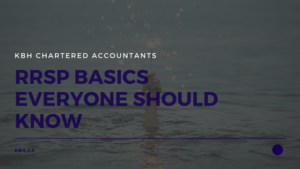Starting with your basic definition:
RRSP stands for Registered Retirement Savings Plan, and is a plan that you establish, that the CRA registers, and to which you, or your spouse, or common-law partner contribute.
Any contribution you make (up to your annual limit) is tax deductible, offering you immediate tax savings.
Think of your RRSP as the original tax-free zone for investments, whether stocks, bonds, mutual funds, ETFs or many other securities.
For the year 2017 the maximum contribution is $26,010 & you have until March 1, 2018.
Features to Note:
- There is a limit to how much you can contribute each year based on your income.
- Your contribution limit never expires, it carries forward and accumulates.
- You can put part, or all, of your RRSP contributions into a plan in your spouse’s or common-law partner’s name.
- The income you earn on your contributions stays in your RRSP. You don’t pay tax on it until you take it out of the plan. Even though you can withdraw RRSP money whenever, the idea is to keep your money in the plan until you retire. In most cases, withdrawals are treated as income, which means you’ll pay tax on the money when you withdraw it.
- In the year you turn 71, you need to convert or collapse your RRSP. Don’t worry about getting a big tax bill. You have a number of retirement income options that allow your retirement savings to continue to grow in a tax-sheltered environment. Only payments to you from your plan are immediately taxed. So you can spread the tax on withdrawals over your retirement years
- The idea is that you contribute to your RRSP while in a high tax bracket., get immediate tax savings and pay taxes on withdrawals from the plan while in a lower tax bracket.
Check to see if your company plan matches your RRSP contributions! Often your employer will match any RRSP contributions that you make, up to a specific limit set by the company policy.
